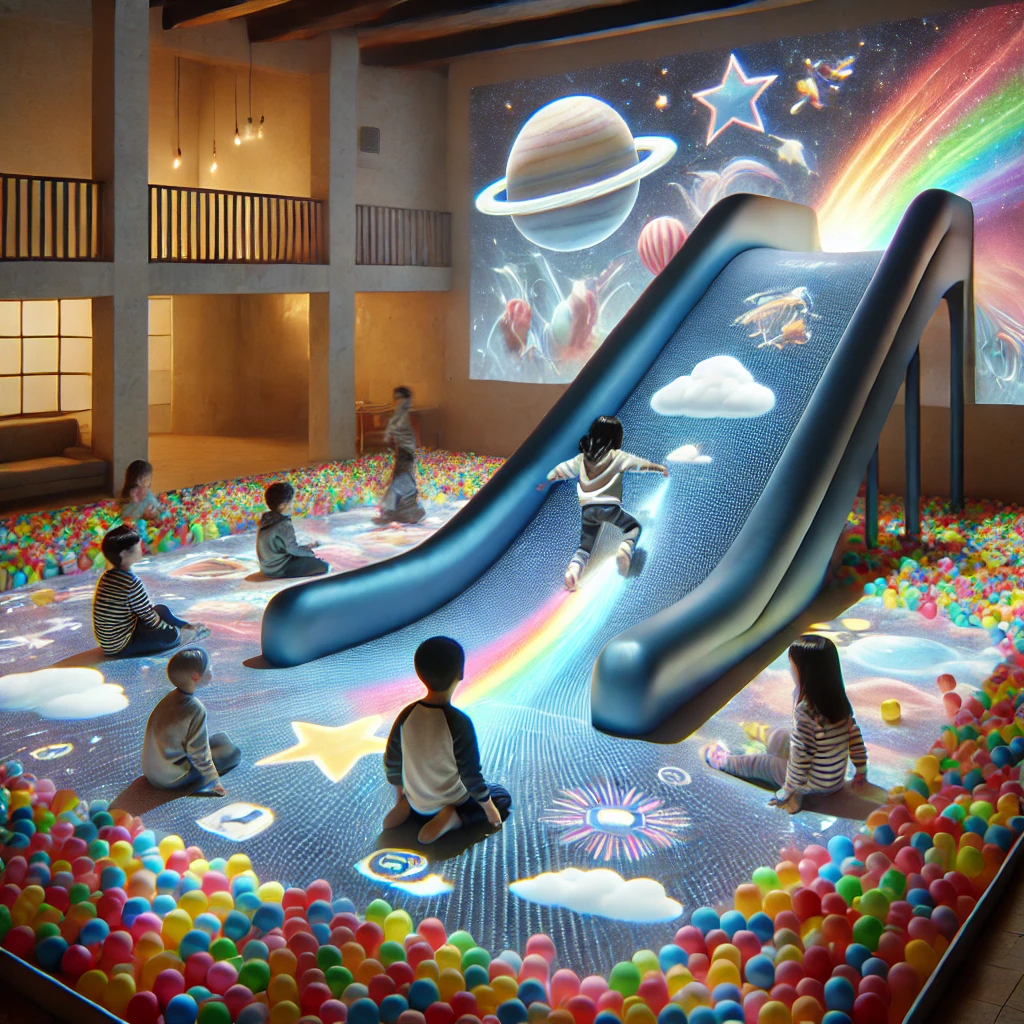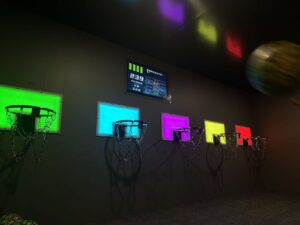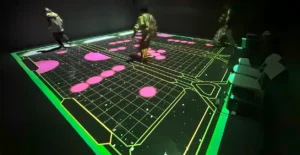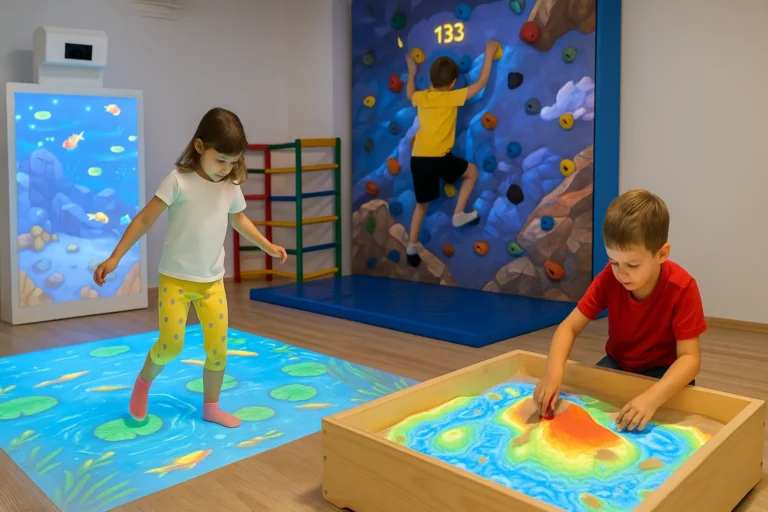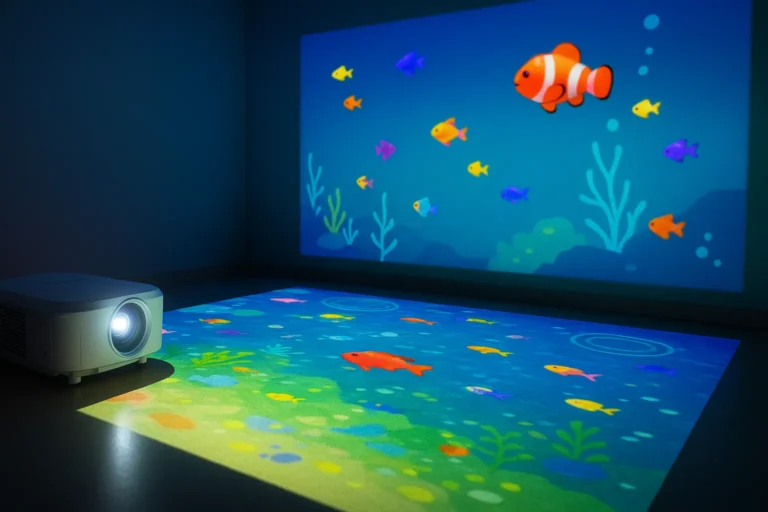In recent years, interactive technology has become a game-changer in the educational system. One notable innovation is the interactive slide game projection, which combines education and entertainment through dynamic visual and game-based learning. This cutting-edge technology is making waves in classrooms worldwide, providing an exciting and immersive way for students to engage with their lessons.
What is an Interactive Slide Game Projection?
Interactive slide game projections are an innovative blend of game mapping technology and projection devices, designed to create hands-on learning experiences. These projections allow students to interact with lessons by engaging with virtual slides and games that are projected onto surfaces such as walls, floors, or whiteboards.
Using an emulator system, these games can mimic the functions of physical activities or traditional learning games, making the classroom more lively. The goal is to foster active participation, critical thinking, and team collaboration among students.
What’s more, schools can easily customize the content based on their curriculum by using customized interactive slide game software, which allows teachers to design specific games and activities suited for their class needs.
Key Components of an Interactive Projection System:
- Projector device: Projects the game or slide onto a surface.
- Interactive software: Facilitates game interaction and customization.
- Touch-enabled system: Allows students to interact directly with the projections.
- Emulator software: Converts real-life interactions into digital responses.
By setting up the system correctly, teachers can turn any space into a highly engaging learning environment.

The Benefits of Interactive Slide Game Projections in Schools
Integrating interactive slide game projection devices into schools comes with numerous advantages. These include making learning more dynamic, encouraging collaboration, and improving overall student engagement. Let’s break down the key benefits:
a) Enhanced Engagement
Kids today are growing up in a tech-savvy world. By introducing interactive slide game experiences in schools, educators can tap into students’ familiarity with technology. The visual and interactive nature of these projections stimulates interest, which leads to better engagement.
b) Collaboration and Teamwork
Interactive projections often involve multi-player games or team challenges, promoting collaboration among students. These activities teach valuable social skills, problem-solving techniques, and encourage students to work together towards a common goal.
c) Hands-On Learning
Using touch-enabled systems, students are encouraged to physically engage with the material. Whether they are solving math problems or exploring historical events through an interactive timeline, the hands-on nature of these activities enhances memory retention and comprehension.
d) Cost-Effective Solutions
Although some may worry about the initial price of setting up these systems, there are several affordable options. Many schools can buy the equipment from educational suppliers or even order DIY projection kits. With time, the cost of technology is decreasing, making it more accessible to all types of schools.
Setting Up a Customized Interactive Slide Game Projection in Schools
Wondering how to bring this technology to your school? It all starts with understanding your school’s needs and finding the best interactive projection device and software. Here’s a step-by-step guide to setting it up.
a) Choose the Right Projection Device
Start by selecting a high-quality projector from a trusted manufacturer or maker. You’ll need a projector with a good resolution and enough lumens to work well in a classroom setting. Many suppliers now offer specific models designed for schools.
b) Select Customized Interactive Slide Game Software
The software is the heart of the system. Opt for customized interactive slide game software that allows you to create tailored games and activities aligned with your curriculum. Look for options that provide a variety of subject-related games—whether math, history, or language arts—and ensure that it’s user-friendly.
c) Calibration and Installation
Once you have your projector and software, you’ll need to install the system and calibrate it to ensure accuracy. Calibration allows the projector to recognize touch inputs and interactions accurately. Many projectors come with built-in calibration features, making the process seamless.
d) Training for Teachers
To ensure the system is used to its full potential, it’s important to offer training for teachers. With the proper guidance, educators can learn to design interactive lesson plans and create customized games for their students.
Enhancing the Interactive Slide Game Experience for Kids
Children learn best when they’re having fun, and interactive slide game projections do just that. By creating immersive experiences, kids can explore academic subjects in a more engaging way.
For example, interactive geography games allow students to explore the world, identifying countries and landmarks in real-time. Similarly, math-based games can turn complex arithmetic into a collaborative and exciting team competition. Teachers can even introduce the latest software updates to keep the games fresh and relevant.
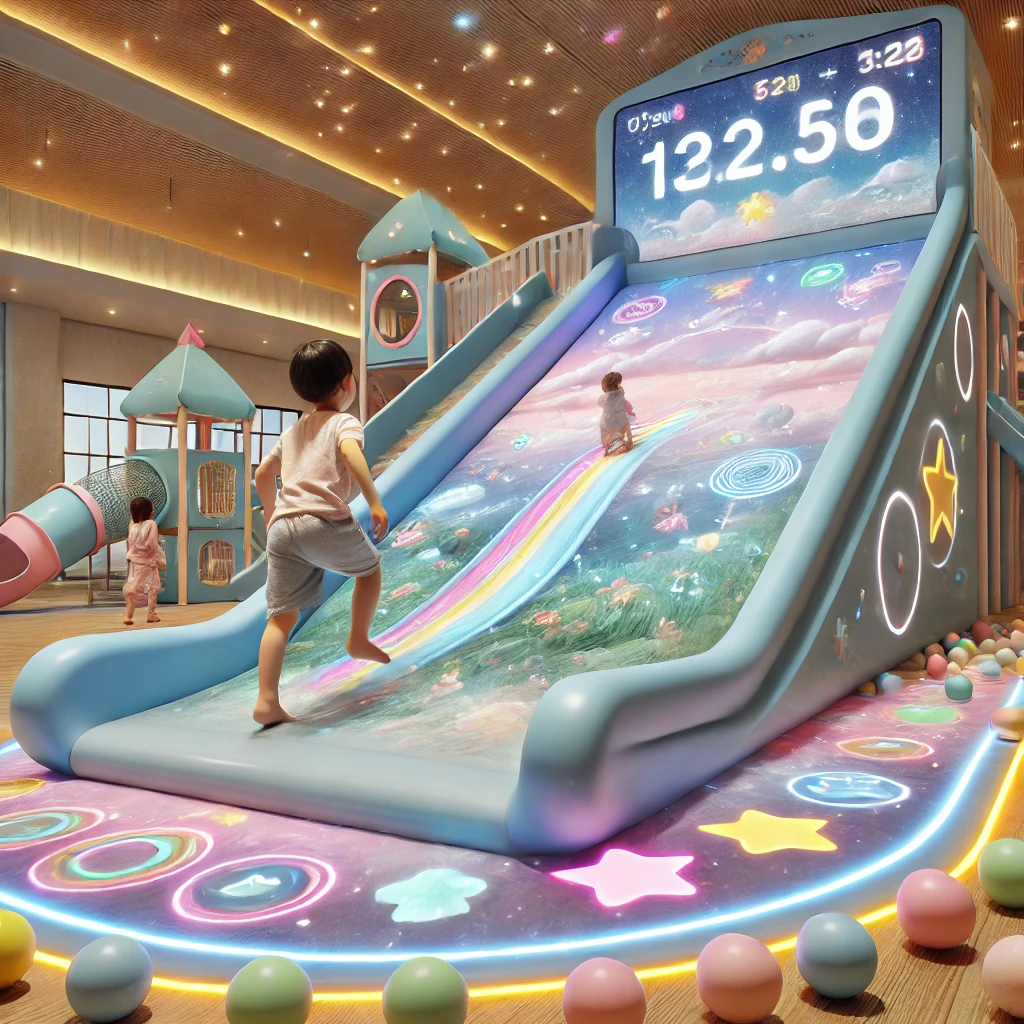
Making Interactive Slide Game Projections Affordable
Are you worried about the cost of setting up an interactive slide game projection system? Don’t be! There are several ways schools can cut down on expenses while still creating an effective setup.
- DIY Projection Systems: Many schools are turning to DIY methods by purchasing separate components, such as projectors and touch systems, and assembling them independently.
- Open-Source Software: Some educators are using open-source emulator software to run interactive games at no extra cost.
- Secondhand Options: Schools on a tighter budget can explore secondhand projectors or refurbished systems from trusted suppliers.
- Grants and Funding: Educational grants and funding programs specifically for technology upgrades in schools can significantly reduce the cost of these systems.

How Interactive Slide Game Projections Shape Future Classrooms
As technology continues to evolve, it’s clear that interactive slide game projections will play a vital role in shaping the future of education. Manufacturers are working on releasing the latest projection systems, with enhanced features like augmented reality and AI-based interaction. These advances will provide even more ways to engage students and enrich the classroom experience.
You’ll need customized interactive slide game software that is compatible with your projector and system. Many options also offer open-source versions for basic setups.
Yes! High-quality projectors from top manufacturers come with features like high brightness and wide throw angles, making them ideal for large classrooms.
The price varies based on the equipment and software you choose. You can expect costs to range from a few hundred to a few thousand dollars, depending on whether you buy new or refurbished systems and which supplier you go through.


